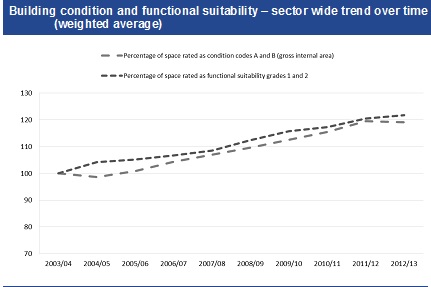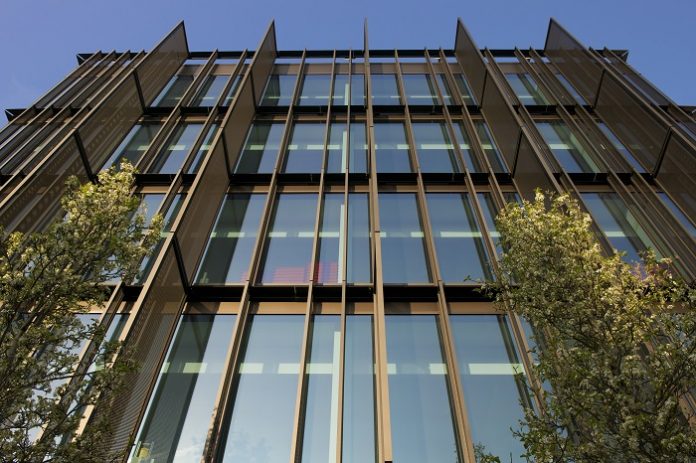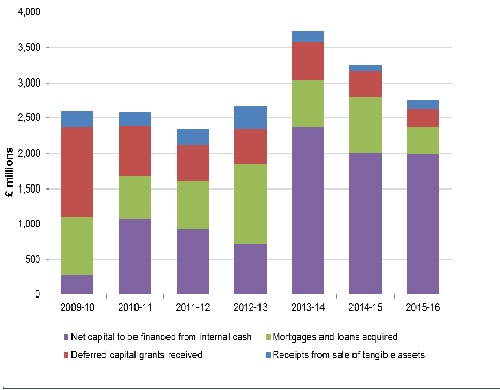Research for the efficiency review shows that University buildings are in better condition and more fit for purpose, compared with the previous decade. But as Sian Kilner explains, effective estate management will be vital for meeting the challenges to come.
When students were asked by the by the Higher Education Design Quality Forum what the top priorities should be for spending on estates and facilities, the results were interesting.
Students identified spending more on the repair and maintenance of existing buildings as the top priority, followed by increasing the environmental sustainability of buildings, enhancing outdoor spaces and replacing old buildings with new ones.
Good news – making progress
The good news is that there has been major progress in delivering these priorities over the past ten years.
The research led by the Association of University Directors of Estates (AUDE) for Phase II of the efficiency review led by Professor Sir Ian Diamond looked at trends in the quality of the estate. Quality here means the physical condition of buildings and their functional suitability, whether they are fit for purpose.
Sector-wide trends in the ten years leading up to 2012-13 show a marked improvement in the quality of the estate over the period measured in terms of building condition and fitness for purpose:
- The percentage of space rated as Condition Category A (as new) and Category B (sound, operationally safe and exhibiting only minor deterioration) has increased by more than 19% to 78%.
- There has also been a marked increase in the proportion of space rated as being fit for purpose. The percentage of space rated as functional suitability Grades 1 (excellent) and 2 (good) is now 85%, an increase of nearly 22%.

Source: London Economics based on EMS data
These improvements in condition and functional suitability stem from the major investment that higher education institutions (HEIs) have made in their estates to adapt and renew buildings to meet changing demand and to comply with legislative and environmental standards.
These improvements have been achieved in spite of the age and inflexibility of much of the building stock. Some two thirds of the non-residential estate was built before 1980. Older buildings are often less flexible and fit for purpose. On average 16% of HEIs’ floor area is in listed buildings. HEIs play an important role in conserving many important buildings of architectural or historic interest, but listed status can be a major restriction on the scope for adaptation and reconfiguration. Inflexibility and poor fitness for purpose are also characterise much of stock built in the 1960s.
But the challenge continues – trends in investment
Although it’s good news that nearly 80% of the estate is now rated as being in good condition, that still leaves around a fifth that doesn’t meet that standard. Buildings that fall into Condition Category C are defined as “operational but major repair or replacement needed in the short to medium-term (generally 3 years)”, and those in Category D are either “inoperable or serious risk of major failure or breakdown”. Across the UK, the cost of bringing these buildings up to a good standard – to at least Category B – is estimated by the sector to be in the order of £4bn[1].
Universities have worked very hard to sustain investment in the estate, in the face of very substantial cuts to public funding. As the graph (below) demonstrates, investment has remained relatively stable, with big injections predicted in the coming years, but this is now managed through a far greater investment funded by internal reserves or through additional borrowing.
However, real questions remain over whether this level of investment is sufficient in the long term. These figures do not include maintenance costs, which form a vital part of the overall investment required to ensure that the estate remains fit for purpose. Indeed, the ratio of maintenance costs and capital expenditure to the insurance replacement value of space is often used a guide to the level of annual expenditure needed to maintain an estate in good condition and keep it fit for purpose through upgrading or redevelopment. Sector-wide -and in spite of the investment indicated above -this ratio has seen a recent decline, with the fall being marked since 2010-11.
A fall in this ratio is an indicator that not only will it be harder to make inroads into improving the remaining 20% of poor condition space, but there is the risk that the progress achieved over the past ten years in raising quality will halt – and even begin to reverse.
Sian Kilner is a director of Kilner Planning, which, along with London Economics, carried out the research for AUDE and its partners, Universities UK, the Higher Education Funding Council for England and the British Universities Finance Directors Group, on the estates workstream as part of the Diamond Review Phase II.
For an introduction to the value and role of the higher education estate and other posts from the workstream see our HE estates index.
———————————————————
[1] HESA non-residential EMR data 2012-13









